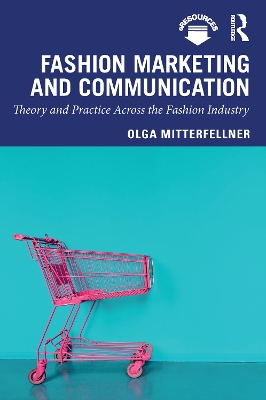Mastering Fashion Management
2 total works
Some of the usual obstacles to modern teachings of marketing are ethnocentricity, the limitation of creative thought by conformity to existing theories, lack of questioning of ethics, and a disconnection from historic events or sociological discourse. This book, in contrast, draws together interdisciplinary approaches from marketing, branding, promotion and critical media studies as tools for understanding the way in which fashion works today, and re-evaluates what makes certain fashion marketing tactics fashionable.
Offering a combination of theory and practice, Fashion Marketing and Communication is full of international case studies, practice-based examples and interviews with scholars and practitioners in the fashion and communications industry. Covering subjects including the history of consumerism, fashion marketing, the creative direction of the fashion brand and the use of bloggers and celebrities as marketing tools, this book delineates the opportunities and challenges facing the future of fashion media in the twenty-first century.
Examining the last 100 years of marketing and communications, current theory and practice, as well as questions on the ethics of the fashion industry, this broad-ranging and critical text is perfect for undergraduate and postgraduate students of fashion marketing, branding and communication.
This textbook examines fashion luxury brand management, providing students with a comprehensive understanding of its origins, unique components, current practices, global trade and, most importantly, the application of sustainable models to the industry. It also highlights what makes brands fail and how they can become more resilient.
The key content covers the heritage of luxury brands, the importance of craftsmanship and creative direction, the role of luxury conglomerates, cultural awareness and internationalisation, risks of failure and opportunities for revitalisation as well as the application of sustainable measures for a resilient and ethical brand future. Each chapter includes a combination of industry insights, case studies or expert interviews. Coupled with theoretical frameworks and business models, these examples and case studies show how sustainable models can be applied to existing luxury brands and how practices can be embedded into the brand concept. Students are encouraged to think about opportunities and solutions, unique to luxury brand management, and will gain knowledge and skills for a successful future career.
A truly global and holistic textbook, Luxury Fashion Brand Management and Sustainability should be core and recommended reading for advanced undergraduate and postgraduate students studying luxury fashion management, luxury brand management, sustainable fashion and responsible business and fashion marketing and communications. Supplementary online resources include chapter-by-chapter PowerPoint slides and a test bank.

